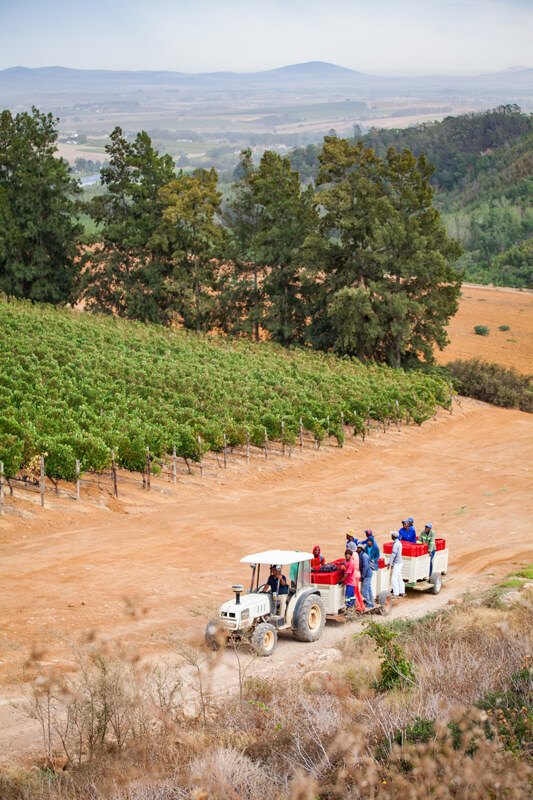
SITE SPECIFIC
The soils within the Cape are highly varied, mainly due to pronounced differences in topography and geology, greatly impacting mesoclimate and vine performance. Within Stellenbosch, most of the vineyards from where the Le Riche grapes are sourced are close to the ocean, providing a cooling breeze in the afternoon during the hot summer months. The majority of the fruit comes from two soil types - decomposed granite soils higher on the mountain slopes and loamy gravels on the valley floor.
This mixture of older and younger soils is thanks to various weather cycles and periods of inundation by the sea, together with the pronounced and varied geography of the Western Cape, which gave rise to great soil diversity over short distances. In the Stellenbosch region, the general pattern is sandstone mountain tops, often resting on young granite intrusions, surrounded by older ferricrete (coffee stone) rich duplex granite at lower altitudes.
Traditionally, Le Riche works with about ten - fifteen vineyards based in the Stellenbosch wards of Jonkershoek and Simonsberg, along with the upper and lower foothills of the Helderberg Mountain. Over the years, the winemaking team has established long-term, trusted grape grower relationships. Meticulous attention and strategy is placed on identifying specific vines within the vineyard that will provide the ideal fruit needed for every wine in our range.
Every ward or region showcases vastly different terroir characteristics, which we aim to portray in the final wines
STELLENBOSCH:
IT'S IN THE DETAILS
Stellenbosch provides an ideal landscape for growing grapes, thanks to a unique combination of cooling Atlantic Ocean winds and some of the oldest geological soils in the world. For this very reason, we choose to work with Cabernet Sauvignon in Stellenbosch. The moderate climate and well-drained soils provide the terroir that the vigorous and demanding grape variety most often requires to thrive.
Stellenbosch is celebrated as having some of the oldest soil in the world, adding incredible depth and character to iconic varieties such as Cabernet Sauvignon and encapsulating the detail and complexity of the region.
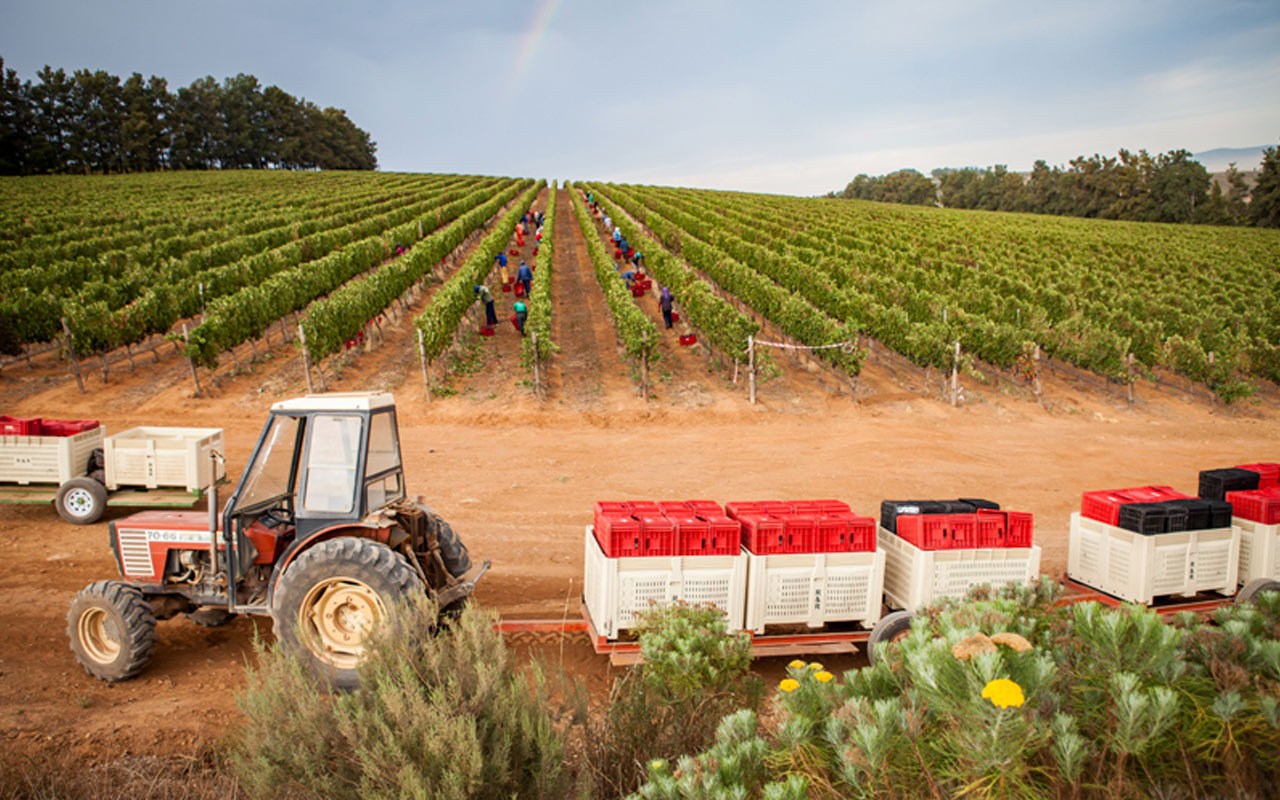
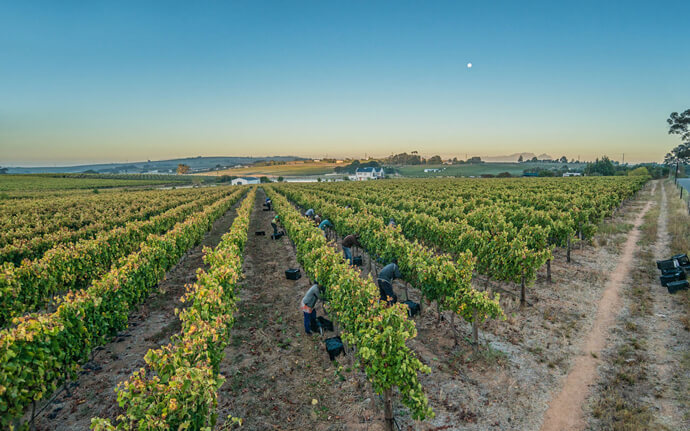
HELDERBERG MOUNTAIN AREA
The Helderberg wine-growing area stretches from Somerset West to the edge of Stellenbosch. Due to the diverse geologic history, there is a mixture of the soil types, as well as a dynamic growing climate. Elevation ranges from 60 to 400 meters above sea level, and the soil types found in the area include granite, shale and sandstone. The combination of these different soils has both great water-holding capacity as well as drainage; making it possible to plant vines which require little to no irrigation. Since this growing area is situated close to False Bay, the vines benefit from the moderating effect of the cooling ocean breezes, producing smaller berries with concentration of fruit flavour, colour and smooth tannins.
The Helderberg Mountain can be separated into two main areas: the Upper and Lower Helderberg.
LOWER HELDERBERG
A large area of rolling hills is characterized by old soils littered with Coffee stone deposits and situated between 50 to 150 metres above sea level. Two villages separate the area, Raithby and Firgrove.
RAITHBY
Located to the north and is where the Le Riche Winery is based. The soils in this terroir are made up of older duplex earth and are slightly sheltered from the southeastern winds. For this reason, the wine is more voluptuous and richer, showing lots of fruit, good ripeness and depth.
FIRGROVE
Located to the south and overlooking False Bay, the older soils here mixed with the cool winds mean there is a long growing season. Typically, it buds early, ripens late, has a long hang time and produces wine with beautiful perfume and lots of complexity without excessive power. The region is also cooler than the rest of Stellenbosch.
UPPER HELDERBERG
The high slopes, between 150 and 600 metres above sea level, are north-west facing, meaning the vineyards receive a lot of sunshine. The soils are composed of recently weathered deep red fertile granite with vigorous growth. The resulting wines made from this area tend to be very dense with grippy tannins, showing hints of olive tapenade and fynbos characters.
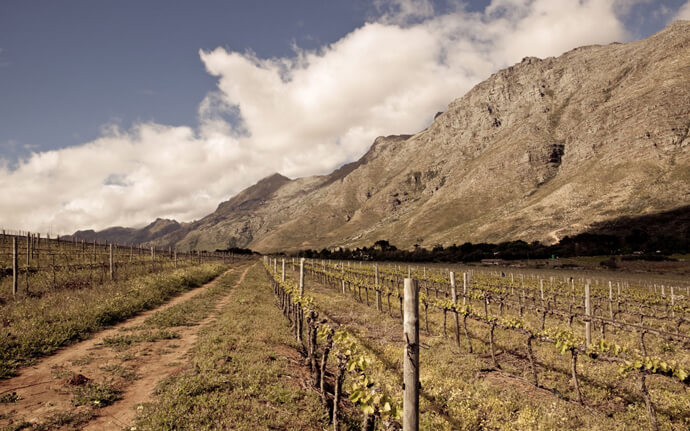
JONKERSHOEK VALLEY WARD
The majority of the Jonkershoek Valley is a nature reserve well known for its fynbos, trails and waterfalls but it is the heart of the valley that is known for its distinctive conditions best suited for grape growing. The south west-facing slopes and a strong south eastern wind during the summer months cool down the vineyards, limiting vine disease and reducing yields. Vineyard altitudes range between 150 to 400 metres above sea level and the valley has the highest rainfall in the region.
As a valley, Jonkershoek is made up of mostly younger granitic soils on the slopes that are intermixed with shale. Decomposed Table Mountain sandstone on the valley floor tends to be sandy with low nutrient and water-retention properties and are often found in the alluvial deposits next to the Eerste river.
The resulting wines from this area show elements of cassis and dark fruits with tobacco leaf undertones.
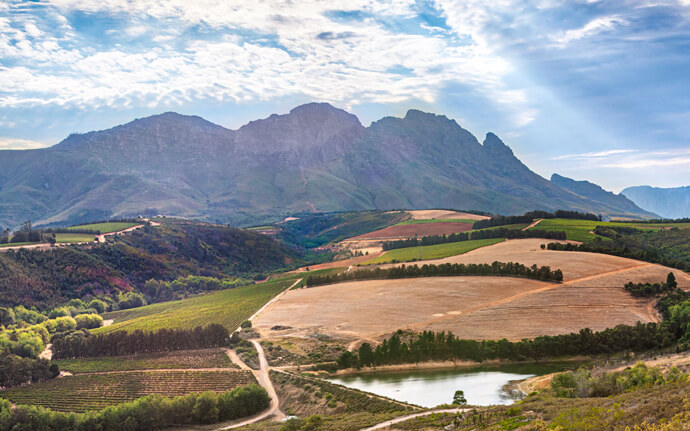
SIMONSBERG -STELLENBOSCH WARD
The Simonsberg is at the centre of the Cape Winelands.
This prominent mountain rises nearly 1400 metres above sea level and forms a stark boundary between the wine-growing regions of Stellenbosch (to the south), Paarl (to the northeast), and Franschhoek (to the east). The vineyards are all planted on elevations ranging from 200 to 500 metres above sea level.
The Simonsberg area consists of predominantly younger, deep red decomposed granite soils. These highly regarded reddish and yellowish-brown soils are usually well drained with balanced growth potential. The south-facing, high slopes mean the vineyards are some of the latest to ripen in the region. This is a great advantage as it allows for a long ripening period and flavour development. The wines will brim with red fruit, and often have fantastic ageing potential due to their firm tannin structure.